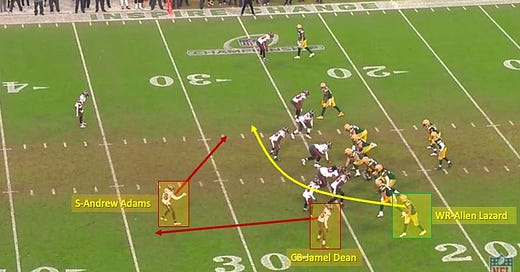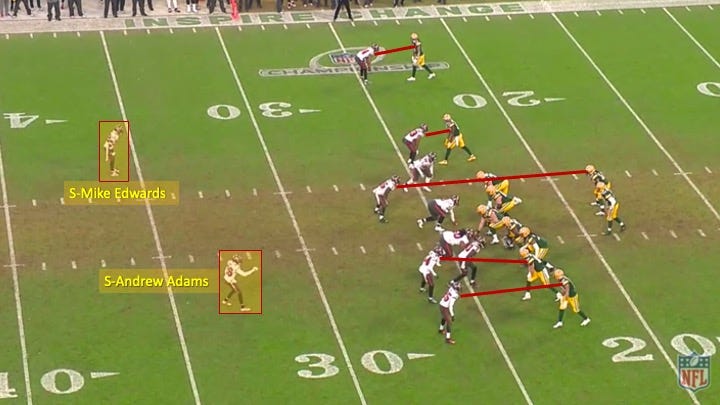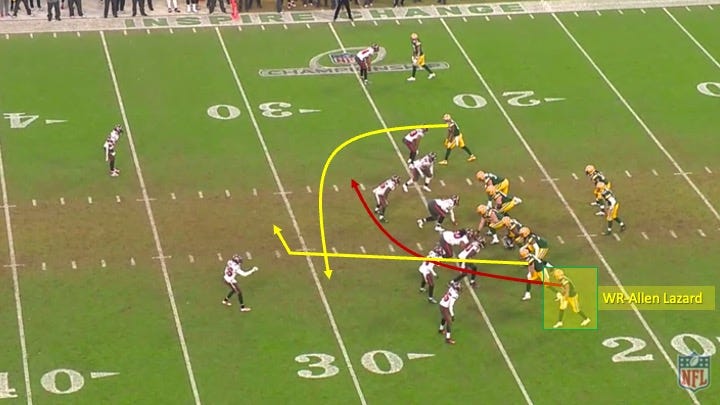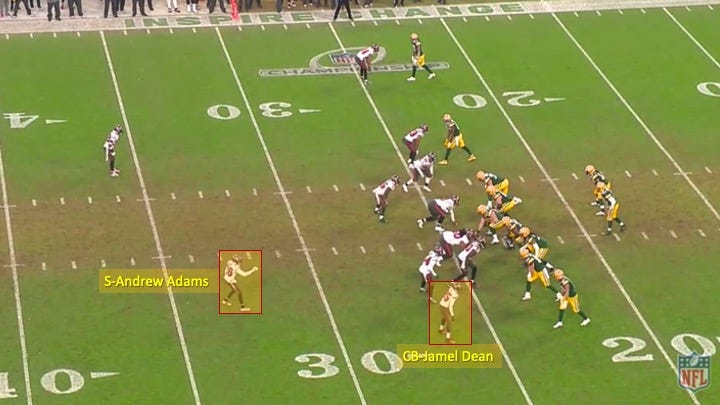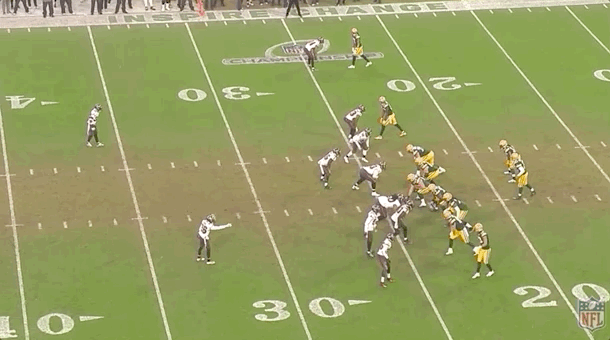3rd-and-short-to-medium situations tend to be man-coverage downs for the defense. As a result, offenses like to dial up their man-beaters.
Mesh (which we wrote about last week along with Mesh Rail and Mesh Traffic) is one of those route concepts. It attacks man coverage with shallow crossers coming from the perimeter and inside routes creating traffic for defenders to have to fight through.
Defenses must be ready to account for these concepts. One way to do so is by cutting the crosser.
Essentially, it’s a trade-off of receivers in man coverage that gives the defense better angles on the crosser. It also isn’t always easy for the quarterback to recognize pre-snap that the defense is planning to cut the crosser, which adds to the effectiveness of the approach.
This first example is from the 2020 NFC Championship Game between the Buccaneers and Packers. This was a 3rd-and-5 in the 4th quarter of a one-possession game. Tampa matched up in 2-man coverage (2 deep safeties, man coverage underneath):
The Packers were running Mesh with Allen Lazard running a shallow crosser underneath both the #2 receiver next to him and the crosser coming from the other side of the formation:
Focus on Buccaneers safety Andrew Adams and cornerback Jamel Dean at the bottom of the screen:
They were communicating pre-snap, likely because of the tight receiver splits to their side of the field, which was an alert for a potential crosser.
Instead of allowing the traffic to rub or pick Dean, leaving Lazard wide open, Adams would cut Lazard’s crossing route since he had a clear path and a better angle. Dean would then replace him over the top:
The coverage design took away Rodgers’ preferred option. And this gave the pass rush time to get home:
Here’s an example from another 2020 game, this time between the Seahawks and Rams. This wasn’t Mesh, but it had a shallow-crosser element.
L.A. faced a 3rd-and-7, and Seattle appeared to be playing 2-man at the snap:

